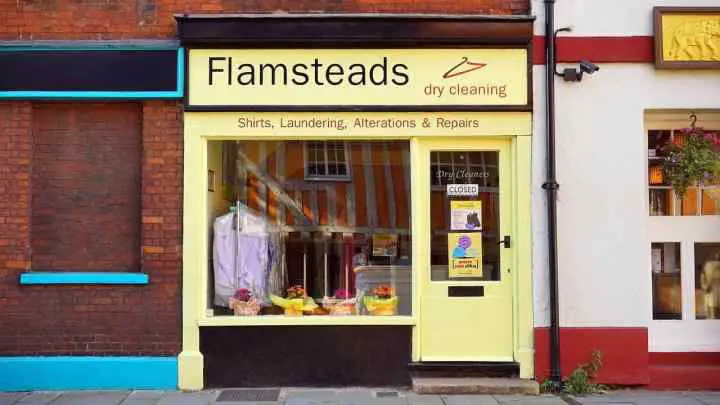Anyone interested in the local history of Hertfordshire or trying to discover more about their family history in the area has a wide array of resources and societies that can help.
Why is Hertfordshire called Hertfordshire?
The name Hertford comes from the Anglo-Saxon words ‘heort ford’, meaning the deer’s ford (a crossing place over water), and the Normans adapted the old English word ‘sćir’ (land under official control) into ‘shire’.
Hertfordshire Is One Of The Home Counties
Hertfordshire is north of London in the region called East of England, and it’s firmly included in the group of counties surrounding London known as the ‘Home Counties’.
Hertfordshire is a landlocked ceremonial county which shares borders with the following counties:
- Bedfordshire (to the north)
- Cambridgeshire (to the north)
- Essex (to the east)
- Greater London (to the south)
- Buckinghamshire (to the west)
Is Hertfordshire Outside London?
Depending on where your journey starts and ends, Hertfordshire is at least 23 miles away from London and is easily accessed with an hour’s drive or a half-hour train journey. Hertfordshire is definitely a county outside London and not a suburb of the city.
However, easy access to London means the county is popular with London commuters and weekend-home owners, which raises the local house prices.
The Cities And Towns Of Hertfordshire
Hertfordshire is not a town but is a county with an area of 634 square miles (or 1,640 square kilometres) which contains a city and many towns, villages and hamlets. Hertford is a market town based in the county of Hertfordshire which used to be the county’s focus for agricultural sales.
St Albans is the only city in Hertfordshire, which has a population of roughly 82,000 (up from 57,894 in 2011).
What is the biggest town in Hertfordshire? Watford is home almost 132,000 people, Hemel Hempstead has almost 85,000 residents and Stevenage has a population of almost 90,000 making these three Hertfordshire towns bigger than the county’s city of St Albans.
The city and towns of Hertfordshire are:
- Baldock
- Berkhamsted
- Bishop’s Stortford
- Borehamwood
- Broxbourne
- Buntingford
- Bushey
- Cheshunt
- Harpenden
- Hatfield
- Hemel Hempstead
- Hertford
- Hitchin
- Hoddesdon
- Letchworth
- Potters Bar
- Rickmansworth
- Royston
- St Albans (city)
- Sawbridgeworth
- Stevenage
- Tring
- Waltham Cross
- Ware
- Watford
- Welwyn Garden City
Hertfordshire History On Facebook
Sharing news of local history or family history matters in Facebook groups is a great way to connect with others. Old photos, videos, memories and discoveries means many of these groups are very popular and active.
The Facebook groups focussed on the past people and places of Hertfordshire include:
- Braughing Local History Society
- Berkhamsted Local History & Museum Society
- Harpenden & District Local History Society
- Sawbridgeworth Local History Society
Local History Resources For Hertfordshire
In addition to the extensive list of UK resources which can aid your local history or family history research, the following groups and places exist to further the knowledge about Hertfordshire’s past:
- 1940s Experience, Bushey
- Abbots Langley Local History Society
- Arc & Arc
- Art and Design Gallery, Hatfield
- Ashwell Village Museum
- Baldock Local History Society
- Baldock Museum
- British Schools Museum
- Bushey Museum
- Cromer Windmill
- Dacorum Heritage Trust
- Datchworth Museum
- de Havilland Aircraft Museum
- East Herts Archaeological Society
- Elstree and Boreham Wood Museum
- Frogmore Paper Mill
- Gorham House
- Harpenden History
- Hatfield House
- Hatfield Palace
- Hemel Hempstead Local History and Museum Society
- Henry Moore Perry Green
- Hertford Museum
- Hertfordshire Archives and Local Studies Library
- Herts Memories
- Hitchin Historical Society
- International Garden Cities Exhibition
- Knebworth House
- Lemsford Local History Group
- Lowewood Museum
- Mill Green Museum
- Museum of St Albans
- Much Hadham Forge Museum
- Natural History Museum at Tring
- North Hertfordshire Museum
- Pirton Local History Group
- Potters Bar Museum
- Preston, Hertfordshire in the Nineteenth Century
- Redbourn Museum
- Redbournbury Mill
- Rhodes Arts Complex
- Royston & District Museum and Art Gallery
- Shaw’s Corner
- St Albans History
- St Albans Organ Theatre
- Stevenage Museum
- Three Rivers Museum
- Tring Local History Museum
- Verulamium Museum
- Ware Museum
- Watford Museum
- Welwyn Roman Baths
Back to Home page.
Thanks to MikesPhotos for use of the image shown at the top of this page.


